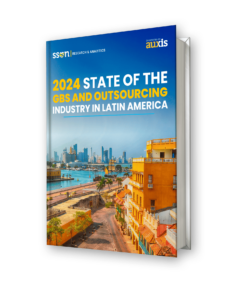Mergers and Acquisitions (“M&A”) have been running at high levels over the past number of years, but 2021 was a record-shattering year for M&A trends, growing by 63% and exceeding $5 Trillion for the first time ever according to Dealogic data. US-based deals nearly doubled from 2020 to $2.61 Trillion, with other global markets nearly reaching the same growth levels.
The combination of healthy corporate balance sheets, a strong economic recovery, large amounts of “dry powder” (read, “cash”) and continuing low interest rates are fueling this “feeding frenzy”, which in turn is driving valuations up. In 2021 the median valuation multiple was 12.7x EBITDA, but more than a quarter of the deals recorded had valuations over 20x according to Pitchbook.
Venture Capital and Private Equity buyers were a major part of the transactions taking place, with record levels of dry power fueling investments. In 2021, US Private Equity firms’ transaction value rose more than 55%, compared to 2020, after the pandemic depressed PE activity.
Continuing a trend that started with the pandemic, many large public companies that were impacted by the corresponding economic downturn and increased debt levels, looked to shed non-core businesses from their portfolios. At the same time, the VC and PE firms needed to reduce their accumulated cash, often facing a “use it or lose it” scenario, and actively sought carve-out opportunities.
Carve-out divestitures have averaged between 400-500 deals per year in the US and Europe since 2019, and this trend is also expected to continue with 17% of PE firms planning to carve-out business units within their portfolios.
The middle market in particular has become a “hot commodity” in the M&A crucible. Bolt-on transactions to add scale to existing businesses was another trend that has emerged over the past two years.
High M&A Trends Expected to Continue in 2022
All these factors project high M&A trends as an ongoing trend for 2022. According to a recent KPMG survey, more than 80% of executives say they expect deal valuations to continue to rise in 2022. But these soaring valuations are not dampening the deal market, with only 7% of executives saying that they expect deal volume to decline in 2022.
Basic operational challenges are adding to the impetus for deal-making. Talent shortages, access to skilled resources (particularly in the technology field), and the need to digitally transform their operations, are being cited as additional key drivers by corporate executives for making acquisitions.
These issues, affecting all businesses across every industry, are particularly impactful to the M&A market, where improving operational performance is integral to increasing the value of the companies that have been acquired. According to the KPMG survey, 72% of executives say that they are “pursuing extraordinary synergy targets” in order to unlock more value from the deals, and 58% state that this requires a significant transformation of their operating model.
But with this growing M&A activity also comes an equally sobering statistic: according to a Harvard Business Review study, and many other collaborative studies since then, the M&A failure rate is between 70% and 90%.
Webinar Recap
Nearshore vs. Offshore: Navigating the Hidden Hassles of Outsourcing to Asia
M&A Integration Challenges
Given the expectations for continued M&A activity, how can corporate executives manage their integration risk and deliver the expected deal value?
There are many factors that can impact the successful outcome of a deal. Many of these are rooted in the strategies and execution of the acquisition itself, including:
- Due diligence and pricing gaps
- Mismatch of corporate cultures and business lines
- Lack of an effective, formal integration strategy and approach
- Poor communication across the businesses
- Loss of key resources
But operational and integration challenges are other key factors that can impact the achievement of the expected synergies and outcomes of an acquisition. Having a well-defined end-state target operating model is critical to the success of the transition. Nothing kills a business faster the poor back office transactional execution, which can quickly have an impact on revenue, margins and customer satisfaction/retention.
Typically, an acquired organization establishes a Transaction Services Agreement (“TSA”) with the seller to ensure service continuity and manage such core operational activities as Finance & Accounting, IT, Procurement and Human Resources during the transition of the business. The TSA is often an expensive way to operate, and many buyers look to exit the TSA as quickly as possible.
Outsourcing these functions has proven to be an attractive option for deal-making companies looking to quickly establish a back office operation and enable them to free up resources to focus on more strategic and value-oriented activities.
Historically, outsourcing was not considered part of the M&A transition strategy, becoming more of a focus once stabilization was achieved. But recently, outsourcing is being viewed as a way to accelerate both deal execution and synergy achievements.
Key Benefits of Outsourcing as Part of Your M&A and Carve Out Process
1. Speed
Speed to execution is a major advantage of outsourcing, compared to building an operation from “the ground up.” Typically, an outsourcing provider can stand up an operation in as little as 3-6 months, compared to the 6–18-month typical timeline of the acquiring company. This can result in millions of dollars in cost savings for the buyer through an earlier exit of the TSA.
2. Access to Talent
The outsourcing provider can leverage its existing business infrastructure to make available experienced, knowledgeable staff to take over the key back office functions being transitioned, instead of relying on the transition of existing staff, or having to recruit and hire a new team. PWC reports that only 10% of firms reported “significant success” in post-M&A employee retention (“Ready, set, integrate: Five actions for a successful M&A integration,” PWC.com).
3. Lower Operating Cost
The outsourcing provider will typically operate at a lower cost structure than a US-based internal organization, potentially 30-50% lower with a nearshore model, driving additional cost savings for the buyer.
4. Operational Flexibility
The outsourcing provider can more easily scale its team up or down, as needed, to support changes in the business, and provide easier access to unique skills and tools, with lower investment requirements.
5. Operational Focus
Typically, the back office swallows up 70-85% of an organization’s effort and focus, leaving fewer resources for business growth activities. Reducing the operating cost and efficiency gives increased availability of resources and dollars for revenue growth (and valuation driving) activities.
6. Operational Visibility
Buyers are going to be heavily focused on revenue, cost and operational performance and metrics, but typically back office organizations are weak at providing this kind of operational visibility. Outsourcing providers establish service level agreements, which are built on operational KPI’s, and regularly report on these metrics. An outsourcing provider, by definition, should be able to provide greater visibility into back office operations and their associated synergies.
7. Innovation and Digital Transformation
As discussed above, acquiring executives expect that synergy achievement will require a significant transformation of their operating models. But achieving digital transformation success is a challenging proposition for most organizations. According to McKinsey (“The Keys to a Successful Digital Transformation”, October 2018), less than 30% of technology transformations are successful.
And digital transformations are even harder to achieve success. A top-notch outsourcing firm does transactional work “for a living,” and should be able to provide the expertise and key technologies needed to drive increased performance in back office operations, guaranteeing the outcomes, and ensuring the delivery of the expected cost savings and synergies.
8. Building a Platform
Once it has been built, the outsourcing provider will help the buying company not just operate more effectively with the current acquisition, but establish a platform to absorb additional acquisitions, whether its complementary to the current operation, or separate acquisitions that can be supported through a shared services structure. This back office shared services operation can be a powerful tool to facilitating future deals and their synergies.
Consider the carve-outs discussed earlier. Often these types of deals require a brand-new back office operation to be built. This can include not just the resources to do the work, but the infrastructure needed to perform it. IT infrastructure, Email, ERP, CRM, and other business applications may all need to be stood up as part of the transition. This adds great significant complexity and time to the transition process.
Leveraging outsourcing can solve some of these challenges, as the outsourcing provider may bring a suite of tools and technologies that can “plug into” the newly acquired business.
For example, NetSuite’s Business Process Outsourcing Partnership program provides BPO clients with access to an integrated cloud solution for ERP, CRM, ecommerce and other key business functions at significantly discounted licensing costs compared to acquiring the software directly.
The outsourcing provider should also have a suite of productivity tools, such as RPA, Intelligent Data Capture, Automated Reconciliation, Workflow, Data Analytics, and others. As a result, outsourcing can offer not only the talent and operational expertise to run their back office operations, but a robust platform to run it on.
Outsourcing frees savvy acquirers to focus on deal success
With M&A trends expected to continue its ascent, the availability of a strong operating platform becomes a key element in the deal. And the high levels of risk for deal success means that an acquiring company should focus on the key drivers of value growth and expediting the transition process, not back office transactional work.
Outsourcing has become a very valuable tool for savvy acquirers to solve this problem.




